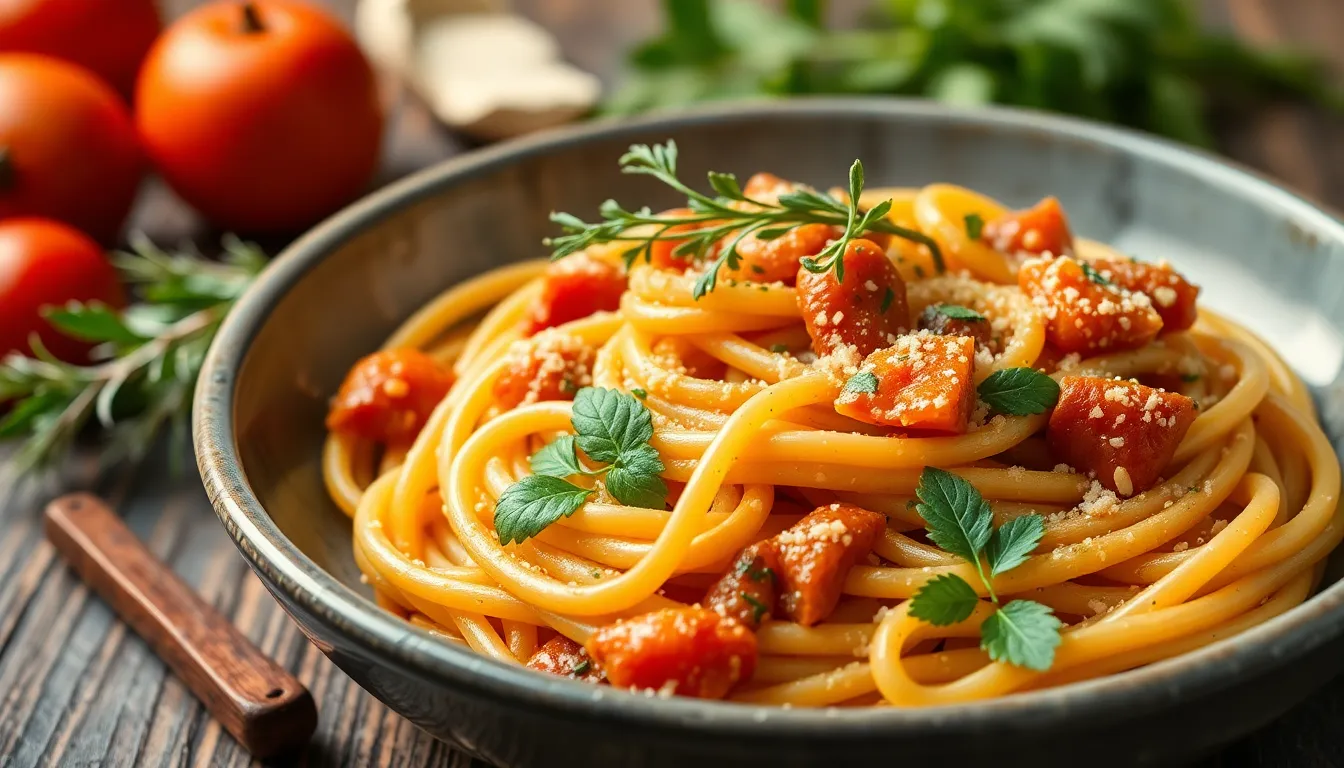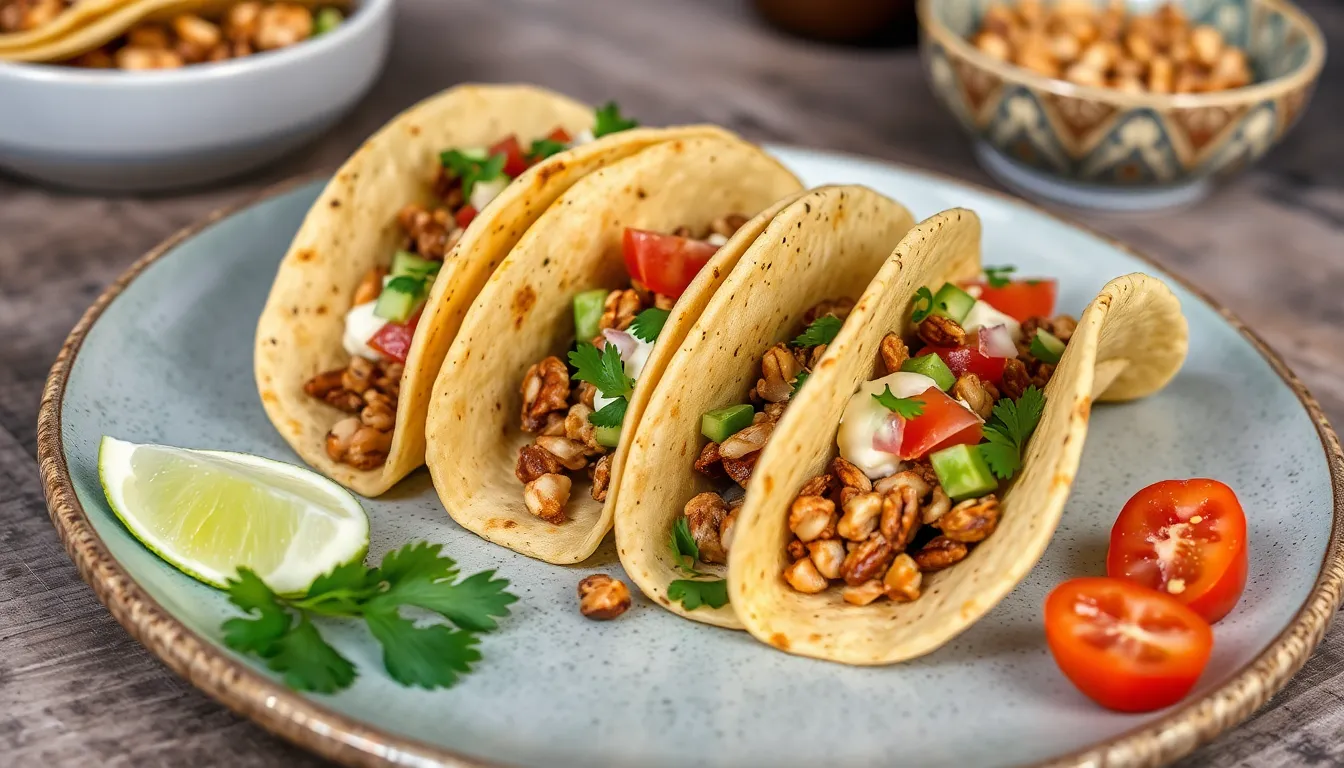Cooking with Herbs: How to Use Them in Pasta Sauces
Introduction
Herbs are the unsung heroes of the culinary world; their aromatic qualities can transform a simple dish into a gastronomic delight. When it comes to pasta sauces, the right herbs can enhance flavors, elevate aromas, and create a symphony of tastes that make every bite memorable. This article aims to provide you with tips and delicious recipes for incorporating an array of herbs into your pasta sauces, ensuring a flavorful experience every time you cook.
Section 1: Understanding Herbs
1.1 Types of Herbs
Herbs come in various types, each bringing its unique flavor and character to dishes. Understanding common culinary herbs can help you make informed choices while cooking.
| Herb Name | Flavor Profile | Best Pairings | Typical Uses |
|---|---|---|---|
| Basil | Sweet, slightly peppery | Tomatoes, garlic, olive oil | Tomato sauces, pesto, salads |
| Oregano | Warm, aromatic | Tomatoes, cheese, meats | Pizza, marinades, pasta sauces |
| Thyme | Earthy, floral | Poultry, tomatoes, potatoes | Soups, stews, pasta sauces |
| Parsley | Fresh, slightly peppery | Vegetables, fish, grains | Garnishes, salads, sauces |
1.2 Fresh vs. Dried Herbs
When it comes to cooking with herbs, one of the most significant decisions is whether to use fresh or dried varieties. Each has its unique characteristics:
- Fresh Herbs: Provide a vibrant flavor and aroma; best added at the end of cooking or as a garnish to maintain their freshness.
- Dried Herbs: More concentrated flavor; can be added earlier in the cooking process for a deeper infusion of flavors.
To substitute fresh herbs for dried herbs, use one teaspoon of dried herbs for every tablespoon of fresh herbs. Conversely, use three tablespoons of fresh herbs for every one teaspoon of dried herbs.
Section 2: Basic Pasta Sauce Recipes
2.1 Classic Tomato Sauce
Tomato sauce is a staple that can be easily enhanced with herbs. Here’s how to make a classic tomato sauce.
Ingredients:
- 2 tablespoons olive oil
- 1 onion, diced
- 3 cloves garlic, minced
- 1 can (28 oz) crushed tomatoes
- 1 teaspoon sugar (optional)
- Salt and pepper to taste
- Fresh basil and oregano, chopped
Instructions:
- In a saucepan, heat the olive oil over medium heat. Add the diced onion and sauté until translucent.
- Add the minced garlic and cook until fragrant.
- Stir in the crushed tomatoes and sugar, if using. Season with salt and pepper.
- Simmer for 20-30 minutes to develop the flavors.
- Just before serving, stir in fresh basil and oregano for a burst of flavor.
Tips for Balancing Flavors:
Adjust the acidity of the sauce with a pinch of sugar if the tomatoes are too tart. Fresh herbs should be added towards the end to retain their flavor.
2.2 Creamy Alfredo Sauce
A creamy Alfredo sauce can also benefit from the addition of herbs. Here’s how to make it.
Ingredients:
- 1 cup heavy cream
- 1/2 cup grated Parmesan cheese
- 1/4 cup butter
- 2 cloves garlic, minced
- Salt and pepper to taste
- Chopped fresh parsley or thyme
Instructions:
- In a saucepan over medium heat, melt the butter. Add the minced garlic and sauté until fragrant.
- Pour in the heavy cream and bring to a simmer. Stir in the Parmesan cheese until melted and smooth.
- Season with salt, pepper, and fresh herbs before serving.
Suggestions for Herb Variations:
Try adding rosemary for a more robust flavor or chives for a mild onion note.
2.3 Pesto Sauce
Pesto is a versatile sauce that celebrates fresh herbs. Here’s a step-by-step guide on making traditional basil pesto.
Ingredients:
- 2 cups fresh basil leaves
- 1/2 cup grated Parmesan cheese
- 1/2 cup olive oil
- 1/3 cup pine nuts
- 2 cloves garlic
- Salt to taste
Instructions:
- In a food processor, combine basil, garlic, and pine nuts. Pulse until finely chopped.
- With the processor running, slowly add the olive oil until the mixture is smooth.
- Stir in the Parmesan cheese and season with salt.
Pesto Variations:
Pesto can be made with various herbs; here are some ideas:
| Variation | Herbs Used | Flavor Profile | Suggested Pasta Types |
|---|---|---|---|
| Classic Basil Pesto | Basil | Sweet, aromatic | Spaghetti, fettuccine |
| Spinach Pesto | Spinach, basil | Earthy, mild | Penne, rotini |
| Rocket Pesto | Arugula | Spicy, peppery | Fusilli, linguine |
| Sun-Dried Tomato Pesto | Sun-dried tomatoes, basil | Rich, tangy | Tagliatelle, farfalle |
Section 3: Tips for Cooking with Herbs
3.1 When to Add Herbs
Timing is crucial when adding herbs to your pasta sauces:
- Cooking with Herbs: Dried herbs should be added early in the cooking process to allow their flavors to meld with the sauce.
- Finishing with Herbs: Fresh herbs should be added towards the end of cooking or used as a garnish to maintain their vibrant flavor.
3.2 Storing Fresh Herbs
Properly storing fresh herbs can extend their shelf life:
- Wash herbs gently in cold water and pat dry.
- Wrap them in a damp paper towel and place them in a plastic bag in the fridge.
- For longer preservation, chop herbs and freeze them in ice cube trays with olive oil.
3.3 Experimenting with Herbs
Don’t hesitate to experiment with different herbs and combinations. Seasonal herbs can provide unique flavors to your pasta sauces. Some suggestions include:
- Summer: Fresh basil and mint
- Fall: Sage and rosemary
- Winter: Thyme and parsley
Trying different combinations will keep your cooking exciting and allow you to discover new favorites.
Section 4: Pairing Pasta and Sauces
4.1 Types of Pasta and Their Best Sauce Matches
Matching the right pasta shape with the appropriate sauce can enhance the overall dining experience. Here’s a quick overview:
| Pasta Shape | Recommended Sauce | Herb Pairing |
|---|---|---|
| Spaghetti | Marinara or Carbonara | Basil, oregano |
| Penne | Alfredo or Arrabbiata | Parsley, thyme |
| Fusilli | Pesto or Tomato Cream Sauce | Oregano, basil |
| Fettuccine | Alfredo or Bolognese | Parsley, sage |
Conclusion
Incorporating herbs into your pasta sauces not only enhances the flavors but also adds a layer of complexity to your dishes. From classic tomato sauce to rich Alfredo and vibrant pesto, herbs can make a significant difference in your cooking. Don’t be afraid to experiment with various herbs and pasta combinations to discover what suits your palate best.
We invite you to share your favorite herb-infused pasta sauce recipes in the comments below. Happy cooking!
Call to Action
If you enjoyed this article and want to explore more cooking tips and recipes, feel free to subscribe to our blog for the latest updates. Also, follow us on social media for daily inspiration and culinary adventures!




